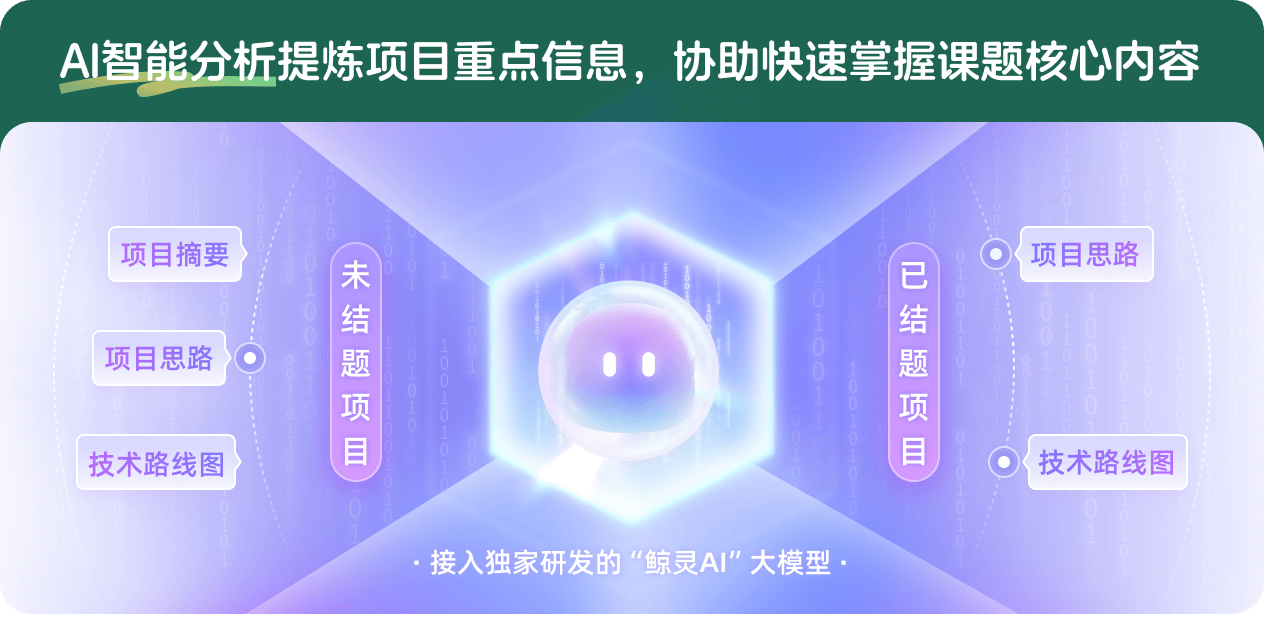构建新一代T细胞受体人源化小鼠模型
项目介绍
AI项目解读
基本信息
- 批准号:81472824
- 项目类别:面上项目
- 资助金额:100.0万
- 负责人:
- 依托单位:
- 学科分类:H1818.肿瘤免疫治疗
- 结题年份:2018
- 批准年份:2014
- 项目状态:已结题
- 起止时间:2015-01-01 至2018-12-31
- 项目参与者:刘建中; 王波; 李蔚然; 黄乙涓; 陈瑞俊; 龚英; 肖贇君;
- 关键词:
项目摘要
Cancer immunotherapy,awarded as the Breakthrough of the Year 2013 by the journal of Science, exerts therapeutic effect via stimulating antitumor immune response,and has been shown prominent efficacy in the recent clinical trial. High avidity antitumor T cells are the key to T-cell based cancer immunotherapy. However, self tumor antigens have the propensity to induce immune tolerance,high avidity T cells for self tumor antigens are deleted in thymus. By virtue of the fact that the corresponding peptides to human and mouse are not identical in most cases;human tumor antigens are not tolerant in mouse and high avidity anti-human tumor antigen TCR,with higher affinity to the non-homologous and heterogenic peptides in human,will be induced in house mouse rather than as tolerant as in human themselves.However,mouse TCR is not suitable for clinical therapy.Li Liangping et al. generated TCR-HLA humanized mice in Germany,with the titanic human TCR gene loci entirely incorporated into mouse genome using yeast artificial chromosome technologies.But the first-generation transgenic mice have some defects. In order to optimize the original model, we propose to construct new humanized TCR-HLA mice in China with human-mice TCR fusion gene loci using the improved YAC transgenic technology and synthetic biology technology as well as the new technologies of the genetic manipulation of mice ES cells (such as TALEN and CRISPR/CAS9) to generate a new TCR-HLA humanized mice platform for cellular immunological R&D.This model will be applied in the screening of the therapeutic TCR gene with high affinity to human tumor antigens.It can be anticipated that this will contribute to T cell modification inducing potent antitumor immune response,and is the approach to the innovation of cancer immunotherapy coming of age.
肿瘤免疫治疗是通过刺激免疫系统来产生治疗效果的;扩增高活性抗肿瘤T细胞是肿瘤过继免疫治疗的关键。由于人体对自身肿瘤抗原易产生耐受,高活性抗肿瘤T细胞在胸腺多已被清除。然而,动物对异体蛋白质不易产生耐受,故在小鼠体内可以产生抗人肿瘤抗原的高活性T细胞。申请人等在德国将识别抗原用的巨大人T细胞受体(TCR)基因位点完整地转入小鼠基因组内,与TCR基因敲除和人类白细胞抗原(HLA)转基因小鼠交配,产生了TCR-HLA人源化小鼠,并已成功地用于分离许多抗人肿瘤抗原的人TCR基因。但这一模型存在一些缺陷,如CD3+T细胞数量偏低。我们推测可能是由于人TCR恒定区与小鼠CD3分子不匹配的缘故,提出构建人-小鼠TCR融和基因位点转基因可克服原有模型的缺陷。本课题设计研制拥有知识产权的新一代TCR-HLA人源化小鼠;以在小鼠体内筛选治疗性人TCR基因。此小鼠模型将成为国际水平的肿瘤免疫治疗重大研发平台。
结项摘要
肿瘤免疫治疗是通过刺激免疫系统来产生治疗效果的;扩增高活性抗肿瘤T细胞是肿瘤过继免疫治疗的关键。从HLA转基因小鼠中可以得到肿瘤相关抗原的高活性抗肿瘤T细胞。HLA人源化小鼠获得进展,建立H2-D 和H2-K 基因敲除小鼠, B2M基因敲除小鼠,从Jax小鼠库引进HLA转基因小鼠,交配已经完成,正在开展实验。由于Jax HLA小鼠多半是西方人常见的HLA等位基因,在中国不常见。所以我们正在进行中国人常见HLA等位基因转基因小鼠的构建。 人-鼠TCR-αlphabeta融合位点转基因小鼠的构建存在一些技术问题。.HLA人源化小鼠只有少数几个HLA位点,难以用于新抗原的研究。针对肿瘤新抗原高活性抗肿瘤T细胞可以不需要HLA-TCR基因人源化小鼠。利用病人外周血PBMC可以分离鉴定,我们已经开展了利用肽/MHC-I结合的预测与免疫学实验相结合的方法鉴定肿瘤抗原表位的研究,已经建立了相应的技术,论文在发表过程中。目前我们正在利用项目经费,在这个基础上,开展新抗原人T细胞的研究。培养研究生3人,2-3篇论文正在发表过程中,后续还有更多的成果出现。.由于李亮平课题组整体搬到暨南大学附属第一医院,项目运作出现一些变化和延迟。由于去暨南大学建实验室,头1-2年主要利用暨南大学提供的人才经费建立实验室和招聘人员。由于课题组2016年转到暨南大学附属第一医院,实验室尽管在来暨南大学附属第一医院初期,花了相当的时间组建团队和实验室。实验室建设和人员招聘花了1-2年的时间,延误的项目的进展,特别是动物实验设备不够完善,只部分完成项目的目标。.现在(2018年)实验室建设已经完成;人员招聘也在今年进展顺利,已经招聘到了助理研究员1人(中国军事科学院),博士后1人,助理4人(硕士毕业生2人,大学毕业生1人,大专毕业生1人),博士生2人,硕士生3人。.由于建立了完备团队和实验室,项目在全力推动中。预计实验将很快获得重要进展。
项目成果
期刊论文数量(0)
专著数量(0)
科研奖励数量(0)
会议论文数量(0)
专利数量(0)
数据更新时间:{{ journalArticles.updateTime }}
{{
item.title }}
{{ item.translation_title }}
- DOI:{{ item.doi || "--"}}
- 发表时间:{{ item.publish_year || "--" }}
- 期刊:{{ item.journal_name }}
- 影响因子:{{ item.factor || "--"}}
- 作者:{{ item.authors }}
- 通讯作者:{{ item.author }}
数据更新时间:{{ journalArticles.updateTime }}
{{ item.title }}
- 作者:{{ item.authors }}
数据更新时间:{{ monograph.updateTime }}
{{ item.title }}
- 作者:{{ item.authors }}
数据更新时间:{{ sciAawards.updateTime }}
{{ item.title }}
- 作者:{{ item.authors }}
数据更新时间:{{ conferencePapers.updateTime }}
{{ item.title }}
- 作者:{{ item.authors }}
数据更新时间:{{ patent.updateTime }}
其他文献
C3H10T1/2成软骨分化过程中miR-19a与CCND1的表达及调控
- DOI:10.13471/j.cnki.j.sun.yat-sen.univ(med.sci).2015.0011
- 发表时间:2015
- 期刊:中山大学学报(医学科学版)
- 影响因子:--
- 作者:龚铭;周治宇;代学俊;高蔓蔓;罗嘉全;黄胜;李亮平;邹学农
- 通讯作者:邹学农
氧化应激活化RAW264.7巨噬细胞对MC3T3-E1成骨细胞迁移、增殖及成骨基因表达影响的实验研究
- DOI:--
- 发表时间:2016
- 期刊:中国修复重建外科杂志
- 影响因子:--
- 作者:彭建强;易志新;武明鑫;黄爱军;林昆;靳松;李亮平;黄胜;罗嘉全;邹学农
- 通讯作者:邹学农
H_2O_2下调miR-21对MC3T3-E1细胞成骨分化影响的研究
- DOI:--
- 发表时间:2018
- 期刊:中国修复重建外科杂志
- 影响因子:--
- 作者:彭建强;黄年盛;黄胜;李亮平;凌泽民;靳松;黄爱军;林昆;邹学农
- 通讯作者:邹学农
低氧诱导因子1及2在人BMSCs成软骨分化中的表达规律
- DOI:--
- 发表时间:2015
- 期刊:中国修复重建外科杂志
- 影响因子:--
- 作者:龚铭;黄胜;罗嘉全;黄保丁;周治宇;代学俊;高蔓蔓;李亮平;邹学农
- 通讯作者:邹学农
Dual-RMCE介导的T细胞受体基因置换系统的建立
- DOI:--
- 发表时间:--
- 期刊:中国细胞生物学学报
- 影响因子:--
- 作者:成凉;彭晋;刘建中;李亮平
- 通讯作者:李亮平
其他文献
{{
item.title }}
{{ item.translation_title }}
- DOI:{{ item.doi || "--" }}
- 发表时间:{{ item.publish_year || "--"}}
- 期刊:{{ item.journal_name }}
- 影响因子:{{ item.factor || "--" }}
- 作者:{{ item.authors }}
- 通讯作者:{{ item.author }}

内容获取失败,请点击重试

查看分析示例
此项目为已结题,我已根据课题信息分析并撰写以下内容,帮您拓宽课题思路:
AI项目摘要
AI项目思路
AI技术路线图

请为本次AI项目解读的内容对您的实用性打分
非常不实用
非常实用
1
2
3
4
5
6
7
8
9
10
您认为此功能如何分析更能满足您的需求,请填写您的反馈:
李亮平的其他基金
利用ES细胞基因操作新技术快速构建免疫基因人源化小鼠
- 批准号:31270920
- 批准年份:2012
- 资助金额:80.0 万元
- 项目类别:面上项目
相似国自然基金
{{ item.name }}
- 批准号:{{ item.ratify_no }}
- 批准年份:{{ item.approval_year }}
- 资助金额:{{ item.support_num }}
- 项目类别:{{ item.project_type }}
相似海外基金
{{
item.name }}
{{ item.translate_name }}
- 批准号:{{ item.ratify_no }}
- 财政年份:{{ item.approval_year }}
- 资助金额:{{ item.support_num }}
- 项目类别:{{ item.project_type }}




















